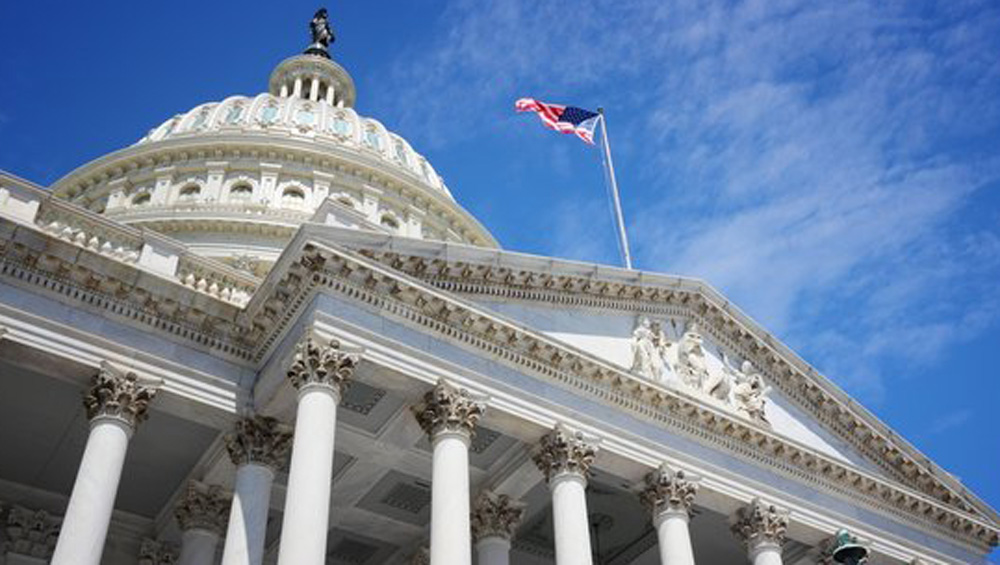
Lawmakers Need To Act To Halt The Erosion Of Access To Local TV News


Emily Barr
This past week, President Joe Biden spoke to the American people from the Oval Office regarding the wars in Ukraine, Israel and Palestine. Naturally he did it in primetime in order to reach as many people as possible, and all of the major networks — both broadcast and cable — carried the address live.
Whether or not you watched, I want you to imagine how current and future presidents might communicate with the public once a large swath of individuals no longer has access to live television either because they have cut the cord and rely solely on streaming channels or because their traditional cable systems have flipped over to the latest technology: replacing traditional cable boxes with internet set-top boxes, and effectively exited the regulated, cable video business. In just the past few weeks, Charter announced that all new cable subscribers would be “encouraged” to use their Xumo streaming box, which is billed as cheaper and more elegant than current cable boxes. But there is one critical element missing from Xumo for those who are complete cordcutters: local television stations.
Nowhere on the cordcutter’s Xumo box will you find your live local television stations unless you happen to subscribe to YouTube TV, Charter or a similar service.
This has me wondering how local television will continue to survive, let alone thrive, in a world hell-bent on leaving it in the dust. The traditional Big Four networks currently command an increasingly disproportionate share of the retransmission revenue secured by local broadcasters despite siphoning off primetime programming and live sports to their own proprietary streaming channels and diminishing the exclusivity and value of their affiliate stations in the process.
Because the networks control the negotiations with the likes of YouTube TV and Hulu+ Live TV, America’s broadcasters are already finding themselves forced to accept below-market rates for carriage of their local signals or risk the loss of carriage entirely and with it, material amounts of retransmission consent revenue, all of which is accelerating the loss of revenue that is directly funding local newsrooms and ultimately the local journalism American communities depend on each day.
In an ideal world, the FCC will act on the recent request from Sen. Ben Lujan and 19 other Democratic and independent senators by improving access to local media on all streaming platforms. In an ideal world, virtual MVPDs and other platforms providing access to linear video channels would be treated just like cable and satellite providers, allowing local broadcasters the opportunity to negotiate for carriage on their own behalf and not through the conflicted lens of television networks, which are hedging their bets and playing on both sides of the field.
Local TV and local TV news, in particular, will continue to be battered by declining revenues, technological upheaval and outdated video policies. All the while, local broadcasters will try in earnest to continue their sacred mission to inform and unify the communities they serve, but with diminishing resources funding their efforts.
The time to act is now. It would be a colossal mistake for our nation if the FCC and Congress allows one of the fundamental principles of our video regulatory policy — localism — to be squeezed out of this new world order. Without a reaffirmed commitment to this core value, we will most certainly continue to sow the seeds of division in a country and a world that can ill afford it any longer.
Emily Barr is the former president and CEO of Graham Media Group.
Editor’s note: A previous version of this column incorrectly characterized Xumo box owners that are Charter Video subscribers as unable to access broadcast stations. While Charter offers one tier of channels that does not include broadcasters, most of its tiers include broadcast stations.
























Comments (7)
RustbeltAlumnus2 says:
October 24, 2023 at 8:44 am
Fewer than half of homes are even watching legacy channels, so I guess they made their choice. Who knew that interrupting our lives would be an essential service? I think a visit to most living rooms will find people glued to the phone in their hand, maybe that’s where we’ll get our news: From our connected friends!
Former Producer says:
October 24, 2023 at 9:15 am
It’s no surprise that cable companies are trying to bypass local television. Look at what Nexstar and Gray recently told investors. In short, “We can make more money from retransmission fees!”
Why not? I don’t blame broadcasters for doing so. Advertising revenue is no longer the top revenue source. Something has to fill the void. It’s easier for broadcasters to simply go back to the cable industry and demand more money for the same thing. Cable companies then pass those costs onto customers. Anyone who has cable TV just has to look at their monthly bills to see the difference. Can you blame people for cutting the cord?
Yes, Emily, companies like Charter will indeed “continue to pad their bottom lines at the expense of communities across our country.” I used to work for a cable company, so believe me, I’m not spinning them as the good guys. But let’s be real. Broadcast companies aren’t some local mom-and-pop operation anymore. We’re talking about billion-dollar publicly-traded companies that are also padding their bottom lines with retransmission fees. And that is — directly or indirectly — causing people to abandon cable TV because they’re tired of their bill going up every month over retransmission disputes.
Whether the FCC or Congress can solve this is a question I cannot answer. What I do know is the broadcast and cable industries are in a deep hole they helped each other dig, because their true “sacred mission” is to make money at any cost. The viewers lose out in the end.
BeyondTheBeltway says:
October 24, 2023 at 10:22 am
Broadcasters and cable operators have built their businesses on regulatory capture. Now that technology has finally introduced competition into the marketplace, they are calling on their old protector, the government, to once again put its thumb on the scale, for them and against taxpayers and consumers.
In my market, it is the local TV news that sows division through a constant “stream” of political correctness and diversity obsession. On top of that, their product is weak and worn. Please don’t ask the government to “fix” local TV news. It’s bad enough already.
BJohnson says:
October 24, 2023 at 10:47 am
“We must run to the government and have them force the people to watch us!” writes Ned Ludd.
Why, Emily? What should shield you from the creative destruction of both technology and the market place? Have you forgotten the role those local broadcasters played in the destruction of print? What should have government have done to make sure every medium size burg remained a two newspaper town?
You consistently manage to land on all the wrong solutions to your problems. And usually all of your answers consist in making someone other than yourself do something. Maybe, just maybe, you should be asking yourself why local news is irrelevant.
In this space you’ve simultaneously railed against guns and bitched that news people spend too much time on crime. You take political stances that alienate half the country and then pen wistful editorials about regaining the trust of your audience.
When Ed Murrow was famously slugging it out with Sen. Joseph McCarthy he quoted Julius Caesar, Act I, Scene III: “The fault, dear Brutus, is not in our stars / But in ourselves…”
JoMomma says:
October 24, 2023 at 12:45 pm
You make some good points with the major exception that 95% of broadcasters are no longer local broadcasters. Most local stations are owned by mostly publicly traded conglomerates from far away. In the end, the local viewers (mostly grandma and grandpa) will be losing here– not the “local broadcaster” that doesn’t exist. Yet another reason why local tv news is in quite a pickle, in addition to an employee exodus, lack of eyeballs, retrans, etc… Will the last person, please shut off the lights?
tvn-member-1103977 says:
October 24, 2023 at 10:37 pm
Birmingham DMA has a non Big Four network, locally owned (University of Alabama on the UA Campus) that doesn’t stream. I watch & DVR the Five PM news to keep up with local happenings; that station records the Five PM news & replays it @ 6 & 10 PM. The Big Four stations in Birmingham, AL don’t really keep up with my local area news except for UA Sports.
I’d love to completely cut out the satellite cable but because that one station isn’t streaming, I’m reluctant to. As it stands now, I plan on keeping the Basic TV package, stream as much other as I can, & install an antenna as backup.
[email protected] says:
October 25, 2023 at 12:36 am
Got to have local TV stations I think most are on many streaming devices to stream local news I know I see WXMI Fox17 in promo saying you can watch news on all your streaming devices on your time. Which when nasty weather is on the way got to have the local TV station.